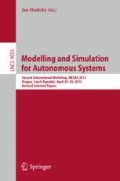Abstract
The recently started Mediterranean ATM Live Exercise (MedALE) project among the SESAR Integrated RPAS Demonstration Activities, has the goal to provide to a wide spectrum of European Stakeholders indications and recommendations about the validity and limits of the existing RPAS assets, practices and operational procedure. In addition this project will provide an interesting contribution identifying the future necessary improvements or modifications to comply with the new ATM concepts that SESAR Programme is realizing. The MedALE demonstration programme adopted an incremental and complementary series of steps designed to demonstrate how RPAS may be integrated into non-segregated airspace. A combined approach has been adopted taking into account different levels of complexity and realism: Virtual and Constructive Real Time Simulation (RTS) and Live Trial (LT). RTS have been performed during November 2014 while LT activities are planned in May 2015.
This paper is focused on the Real Time simulation exercise that investigated the cooperation between ATC Controllers and RPAS Pilots in non-segregated airspace. In order to represent a real environment, a complex networked infrastructure composed by an integration of several remote simulation platforms was set up. In particular, ENAV ATC simulation system (hosted by NATO M&S CoE) and three RPAS simulator known as SKY-Y Full Mission Simulator (Male UAV), FALCO (Tactical UAV) and C-FLY (Light UAV), provided by Alenia Aermacchi, Selex and Nimbus respectively were linked ad hoc. The Operational Environment selected for the simulation exercise was the Decimomannu (LIED) airport located in Sardinia Island. During simulation campaign three type of scenarios have been considered. (1) Reference Scenario - reproducing the situation without the proposed solution. It means that the scenario didn’t include the implementation of the RPAS. (2) Solution Scenario - represented by Reference Scenario with the introduction of three different types (with different performances) RPAS. This scenario was analyzed in both Line Of Sight (LOS) and Beyond Radio Line Of Sight (BRLOS) configurations. BRLOS scenario use RAPTOR simulation platform developed by Thales Alenia Space Italia, a SATCOM simulator in the loop emulating BRLOS C2 data link communications. (3) Non nominal Scenario - represented by Solution Scenario with the implementation of unusual events represented by RPAS loss of power, General Aviation Traffic (GAT) unusual situations and Loss of R/T Voice communication between RPAS Pilot and ATCO.
Making the comparison among these different scenarios interesting results have been obtained in terms of Safety and Human Performance Key Performance Area (KPA) with analysis of several indicators (Workload; Situational Awareness, Usability, Teamwork, Change of practices and procedure). The results collected from validation activities for both ATCOs and RPAS Pilots side, provided important feedback about technologies that support these Stakeholders and gave important elements on integration of RPAS traffic in a real ATM environment.
Access this chapter
Tax calculation will be finalised at checkout
Purchases are for personal use only
References
Roadmap for the integration of civil Remotely-Piloted Aircraft Systems into the European Aviation System, June 2013
SESAR JU, Call Ref. SJU/LC/0087–CFP
Aeronautica and Difesa, pp. 60–61, July 2013
MedALE Project
Author information
Authors and Affiliations
Corresponding authors
Editor information
Editors and Affiliations
Rights and permissions
Copyright information
© 2015 Springer International Publishing Switzerland
About this paper
Cite this paper
Pasciuto, M. et al. (2015). MedALE RTS Campaign: Data Analysis and Reporting. In: Hodicky, J. (eds) Modelling and Simulation for Autonomous Systems. MESAS 2015. Lecture Notes in Computer Science(), vol 9055. Springer, Cham. https://doi.org/10.1007/978-3-319-22383-4_8
Download citation
DOI: https://doi.org/10.1007/978-3-319-22383-4_8
Published:
Publisher Name: Springer, Cham
Print ISBN: 978-3-319-22382-7
Online ISBN: 978-3-319-22383-4
eBook Packages: Computer ScienceComputer Science (R0)

